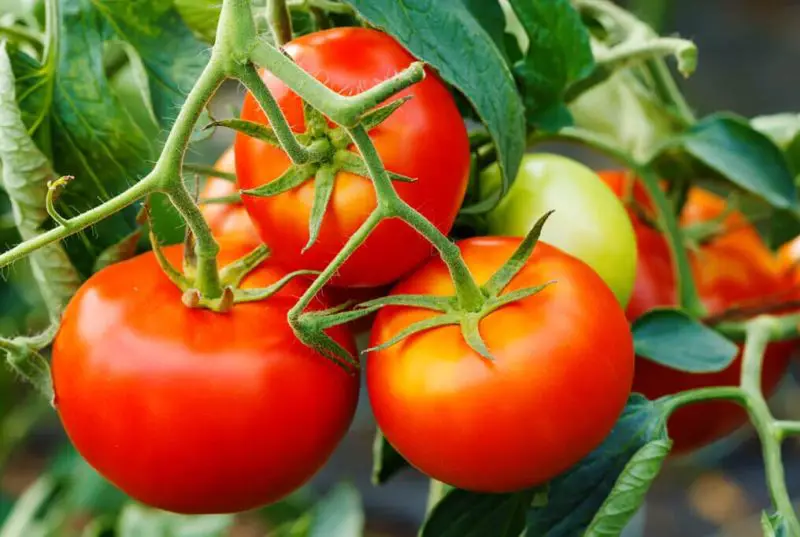Tomatoes are one of the most beloved garden crops across the United States, and Florida presents both unique challenges and opportunities for growing them. The Sunshine State’s climate differs dramatically between its northern, central, and southern regions, which means that timing your tomato planting can make or break your harvest. If you’re wondering when do you plant tomatoes in Florida for the best results, the answer depends on where you live, how you prepare your soil, and the varieties you choose.
Florida gardeners enjoy multiple growing seasons thanks to the warm climate, but heat, humidity, and pests require careful planning. Unlike northern states where tomatoes thrive in the summer, Florida’s summers are often too hot for good fruit production. This makes fall, winter, and spring the most favorable seasons. Understanding these regional differences is key to success.
In this guide, we will explore the optimal planting times in North, Central, and South Florida, the growing conditions tomatoes need to thrive, and practical tips to ensure a healthy and productive harvest. By the end, you’ll know exactly when and how to plant tomatoes in Florida for the best results.
Understanding Florida’s Climate for Tomato Planting

Florida is known for its subtropical and tropical climate, with long summers, short winters, and a generally high level of humidity. This climate allows for extended growing seasons, but it also requires careful timing because excessive heat can stress tomato plants. Temperatures above 85°F during the day and 70°F at night can reduce fruit set, while cooler temperatures encourage flowering and healthy growth.
The state can be divided into three distinct gardening zones: North Florida, Central Florida, and South Florida. Each region has its own microclimate and planting window. While North Florida experiences frost and colder winters, South Florida enjoys nearly year-round planting opportunities, and Central Florida falls somewhere in between. Knowing which zone you belong to is the first step to determining when to plant.
Another important consideration is rainfall. Florida’s rainy season peaks during summer, creating challenges such as fungal diseases and waterlogging. Successful gardeners avoid planting tomatoes during this period, focusing instead on the cooler, drier months. By aligning planting schedules with the climate patterns, you can maximize yield and reduce stress on your plants.
Best Time to Plant Tomatoes in North Florida
North Florida, which includes cities such as Jacksonville, Tallahassee, and Pensacola, has a climate that is more similar to the southeastern United States than to tropical regions. Here, frost is a real concern, and the growing season for tomatoes is more limited. Gardeners typically plant in two main windows: early spring and late summer.
Spring planting usually begins in February or March, after the danger of frost has passed. This allows plants to take advantage of the mild spring temperatures before the intense summer heat arrives. Tomatoes planted at this time often thrive and produce fruit by late spring. Choosing early-maturing varieties is especially beneficial because they can set fruit before temperatures become too high.
A second planting season in North Florida occurs in late summer, usually around August. This crop matures in the cooler fall weather and produces fruit through early winter. However, the late summer planting can be tricky because seedlings must withstand high heat and pests until the weather cools. Providing shade cloth and adequate irrigation helps young plants survive this transitional period.
Best Time to Plant Tomatoes in Central Florida
Central Florida includes Orlando, Tampa, and surrounding areas. The region experiences mild winters and hot summers, making it a favorable area for multiple tomato crops throughout the year. The key to success here is avoiding the peak summer heat, which stunts tomato production.
The first planting season begins in early spring, typically from January to March. During this time, temperatures are mild, and tomatoes thrive. Early planting ensures fruit sets before the arrival of consistently hot summer days. Many gardeners prefer this window because it aligns perfectly with the state’s spring gardening momentum.
A second opportunity comes in late summer and early fall, usually from August through September. This timing takes advantage of the cooler fall months for fruit production. Central Florida’s frost risk is minimal, which allows tomatoes planted in late summer to continue producing well into December. If gardeners use heat-tolerant varieties, they can even experiment with summer plantings, though managing diseases and pests requires more effort.
Best Time to Plant Tomatoes in South Florida
South Florida, which covers Miami, Naples, and the Florida Keys, offers perhaps the most unique tomato-growing environment in the country. Thanks to its tropical climate, frost is virtually nonexistent, and tomatoes can be planted almost year-round. However, success depends on avoiding the sweltering, rainy summer months.
The primary planting season in South Florida is from September through February. During these cooler, drier months, tomato plants grow vigorously and produce high yields. The combination of warm days and cooler nights creates ideal fruiting conditions. Gardeners often enjoy multiple harvests during this period, extending into early spring.
Summer planting is generally discouraged because heavy rainfall increases the risk of fungal infections and pests. Additionally, extreme heat during summer causes poor fruit set. Gardeners who insist on summer planting must use heat-resistant varieties, raised beds with excellent drainage, and consistent monitoring for diseases. Overall, the most reliable strategy is to stick to the fall and winter windows.
Choosing the Right Tomato Varieties for Florida
Selecting the right tomato varieties is just as important as planting at the right time. Florida’s humid climate and unique pest pressures demand cultivars that can tolerate heat, resist diseases, and still produce quality fruit. Gardeners who choose poorly adapted varieties often struggle with low yields and frustrated efforts.
Hybrid varieties tend to perform better than heirlooms in Florida due to their disease resistance. Popular choices include ‘Solar Fire,’ ‘Heatwave II,’ and ‘Floradade,’ which are specifically bred to handle Florida’s hot and humid conditions. Cherry tomatoes such as ‘Sweet 100’ and ‘Juliet’ are also excellent because they set fruit more reliably in high temperatures.
Heirloom tomatoes can still be grown successfully but require more attention. Because they lack modern disease resistance, they need extra care with pruning, spacing, and organic disease management. For gardeners who value flavor over convenience, heirlooms such as ‘Cherokee Purple’ and ‘Brandywine’ can still be rewarding if planted in the cooler parts of the season.
Preparing Soil for Tomato Planting in Florida
Soil preparation plays a vital role in growing healthy tomato plants. Florida soils vary greatly depending on the region, ranging from sandy in coastal areas to richer loams in the interior. Regardless of the soil type, amending it before planting ensures strong root development and better yields.
Tomatoes prefer well-drained soil with a pH between 6.0 and 6.8. Sandy soils, which are common in Florida, drain quickly but lack nutrients. Incorporating compost, organic matter, and slow-release fertilizers improves soil fertility and water retention. Raised beds are especially effective in areas with poor soil quality or excessive rainfall.
Mulching is also essential. A thick layer of straw, pine bark, or landscape fabric helps regulate soil temperature, suppress weeds, and conserve moisture. In Florida’s hot climate, mulch also prevents the soil from drying out too quickly, which is crucial during dry winter and spring months.
Tomato Planting Techniques for Florida
Planting tomatoes correctly can make a significant difference in their productivity. Gardeners should start with strong seedlings, whether purchased from a nursery or grown from seed indoors. Transplants are generally set into the ground once they are 6–8 inches tall and show healthy root development.
One unique aspect of tomatoes is that their stems can develop roots when buried. In Florida, gardeners often plant tomatoes deeper than the original container depth, removing the lower leaves and burying part of the stem. This encourages a stronger root system, which is particularly beneficial in sandy soils.
Spacing is another critical factor. Plants should be placed 18 to 24 inches apart, with rows at least 3 feet wide. This spacing improves airflow, reducing the risk of fungal diseases that thrive in Florida’s humid conditions. Staking or caging plants helps keep fruit off the ground, further preventing rot and pest issues.
Watering and Fertilizing Tomatoes in Florida
Consistent watering is one of the biggest keys to success with tomatoes in Florida. Irregular watering often leads to problems such as blossom-end rot and fruit cracking. Because sandy soils drain quickly, tomatoes in Florida require more frequent irrigation than in other regions.
Drip irrigation is highly recommended because it delivers water directly to the roots while keeping foliage dry, reducing the risk of fungal infections. Watering should be done in the early morning so that plants can dry before nighttime. Overhead watering should be avoided whenever possible.
Fertilization is equally important. Tomatoes are heavy feeders and require regular nutrition. A balanced fertilizer high in phosphorus and potassium promotes healthy roots and fruiting. Gardeners often fertilize at planting and then every two to three weeks during the growing season. In Florida’s leaching-prone soils, frequent but light applications are more effective than heavy doses.
Pest and Disease Management in Florida Tomatoes
Florida’s warm, humid climate creates perfect conditions for pests and diseases. Common problems include whiteflies, aphids, tomato hornworms, and nematodes. Fungal diseases such as early blight, late blight, and powdery mildew also pose major threats. Successful gardeners anticipate these challenges and plan accordingly.
Crop rotation is one of the best preventive measures. Avoid planting tomatoes in the same soil where other nightshades such as peppers, eggplants, or potatoes have grown within the past two years. This reduces the buildup of soil-borne diseases.
Organic gardeners often rely on neem oil, insecticidal soap, and beneficial insects like ladybugs to manage pests. For fungal issues, proper spacing, pruning, and watering at the soil level are critical. Resistant varieties provide an added layer of protection, making them especially valuable for Florida growers.
Harvesting and Enjoying Florida Tomatoes
Tomatoes are ready for harvest when they reach their full color and slightly soften to the touch. Depending on the variety, this can be anywhere from 60 to 90 days after planting. In Florida, staggered planting allows for multiple harvests throughout the year, providing a steady supply of fresh tomatoes.
Gardeners in Florida often pick tomatoes when they are in the “breaker stage,” meaning they are just beginning to change color. This reduces the risk of pests and cracking on the vine. The fruit will continue to ripen indoors at room temperature, ensuring you can enjoy vine-fresh flavor without losing crops to sudden weather shifts.
Freshly picked tomatoes can be used in countless dishes, from simple salads to homemade sauces. Many Florida gardeners also preserve their harvest through canning, freezing, or drying, ensuring that the fruits of their labor last well beyond the growing season.
Fun Facts About Tomatoes in Florida
Tomatoes are not only a favorite crop for home gardeners but also one of Florida’s most important agricultural products. The state is a leading supplier of fresh-market tomatoes in the United States, particularly during the winter months when other states cannot produce.
The ‘Floradade’ tomato was specifically developed at the University of Florida to withstand the state’s unique conditions. It has become one of the most reliable choices for home gardeners across the state.
Interestingly, Florida’s commercial tomato industry often picks tomatoes while they are still green to withstand shipping. Home gardeners, however, have the luxury of harvesting fully ripe tomatoes at peak flavor, making the effort especially rewarding.
Conclusion
So, when do you plant tomatoes in Florida for the best results? The answer depends on where you live. In North Florida, plant in spring and late summer. In Central Florida, aim for spring and fall. In South Florida, stick to fall through winter. By aligning planting schedules with regional climates and using proper techniques, you can enjoy a bountiful harvest of delicious, homegrown tomatoes.
Florida may present unique challenges, but with the right timing, preparation, and care, tomatoes can thrive in your backyard. Whether you’re in Jacksonville, Orlando, or Miami, knowing when to plant is the key to unlocking success. With this knowledge, your Florida tomato garden can deliver fresh, flavorful results year after year.
FAQs about Planting Tomatoes in Florida
What month do you plant tomatoes in Florida?
In North Florida, tomatoes are usually planted in February through March and again in late August. Central Florida gardeners often plant from January to March and again in August or September. In South Florida, the best months are September through February, when the weather is cooler and less humid.
Can you grow tomatoes year-round in Florida?
Technically, South Florida’s tropical climate allows nearly year-round planting, but summer’s intense heat and heavy rainfall make it difficult for tomatoes to set fruit. The most successful crops are grown in the fall, winter, and early spring. In North and Central Florida, frost limits year-round planting.
What tomato varieties grow best in Florida?
Varieties developed for heat and disease resistance perform best in Florida. Popular options include ‘Solar Fire,’ ‘Heatwave II,’ and ‘Floradade.’ Cherry tomatoes such as ‘Sweet 100’ and ‘Juliet’ also thrive because they tolerate heat and set fruit reliably.
How often should you water tomatoes in Florida?
Tomatoes in Florida need consistent watering due to the state’s sandy soils and warm climate. Watering two to three times per week is common, but frequency depends on rainfall and soil type. Drip irrigation is recommended to keep foliage dry and reduce fungal problems.
What is the best fertilizer for tomatoes in Florida?
A balanced fertilizer with higher phosphorus and potassium levels works best. Gardeners often use a 10-10-10 or 8-16-16 formulation, applying light doses every two to three weeks. Because Florida soils lose nutrients quickly, frequent feeding is more effective than heavy applications.
Do tomatoes grow better in pots or in the ground in Florida?
Both methods work, but pots and raised beds are often more successful because they provide better drainage and soil control. Container gardening also makes it easier to manage pests and diseases while protecting plants from heavy rainfall.
How long does it take for tomatoes to grow in Florida?
Most tomato varieties take 60 to 90 days from transplanting to harvest. Cherry tomatoes tend to mature faster, while large heirloom types may take longer. Planting at the right time of year ensures that tomatoes reach maturity before extreme heat or frost interferes.






